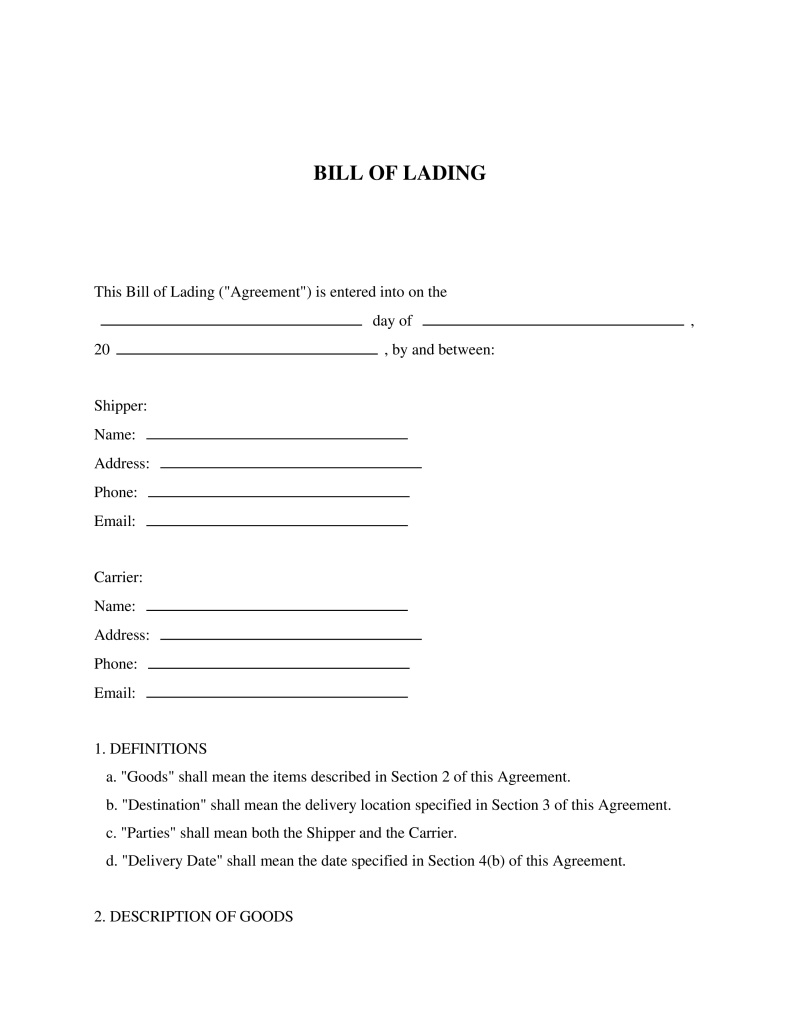A Bill of Lading is a legal document issued by a carrier to acknowledge receipt of cargo for shipment.
Shipper Name
In this field, write the full name of the person or company sending the shipment. Ensure the name is spelled correctly and matches any official documents, as this will be used for legal identification and tracking of the shipment. For example, if the shipper is a company, include the full business name, such as "ABC Logistics, Inc."

Table of Contents
What is a Bill of Lading?
A Bill of Lading is a crucial document in the shipping industry, serving as a contract between the shipper and carrier detailing the type, quantity, and destination of the goods being transported. This document acts as a receipt for the goods shipped and plays a vital role in the regulation of trade practices. It is essential for businesses involved in importing and exporting goods, as it provides legal proof of the shipment's details and conditions, ensuring that all parties are aware of their responsibilities and rights. The necessity of this document spans across various industries, facilitating smooth operations in international trade by providing a standardized method for documenting transaction details.
Key Features
Important Provisions
- Description of Goods: Detailed listing including quantity, weight, and type of goods being shipped.
- Terms and Conditions: Specific conditions under which transportation is provided, including liability clauses.
- Destination Information: Precise details about where the goods are being shipped to and delivery terms.
- Carrier Information: Identification details of the carrier responsible for transporting the goods.
Pros and Cons
Pros
- +Provides a clear record of the transaction, minimizing disputes between involved parties.
- +Helps in tracking shipments and managing inventory efficiently.
- +Enhances security by documenting the condition and quantity of goods at departure.
- +Supports compliance with global trade laws and customs documentation requirements.
- +Facilitates faster clearance and delivery processes.
Cons
- -May be complex to fill out accurately without prior experience or knowledge.
- -Errors or discrepancies in documentation can lead to delays or legal issues.
- -Necessitates thorough verification to ensure all information is accurate and compliant.
Common Uses
- Shipping goods internationally via sea freight.
- Transporting commodities across land borders by truck or rail.
- Sending bulk items requiring detailed inventory control.
- Facilitating cargo shipments that involve multiple carriers or modes of transport.
- Managing imports and exports between business partners in different countries.
- Ensuring regulatory compliance for hazardous materials transport.
Frequently Asked Questions
Do you have a question about a Bill of Lading?
Example questions:
Not the form you're looking for?
Try our legal document generator to create a custom document
Community Discussion
Share your experience and help others
Legal Notice: Comments are personal opinions and do not constitute legal advice. Always consult a qualified attorney for matters specific to your situation.
Comments (0)
Leave a Comment
No comments yet. Be the first to comment!